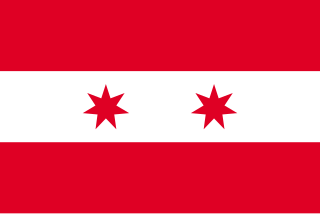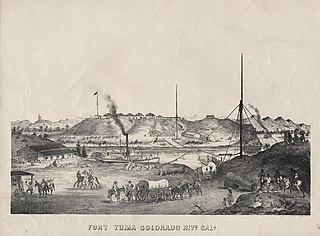 W
WThis article details the history of Sonora. The Free and Sovereign State of Sonora is one of 31 states that, with the Federal District, comprise the 32 Federal Entities of Mexico. It is divided into 72 municipalities; the capital city is Hermosillo. Sonora is located in Northwest Mexico, bordered by the states of Chihuahua to the east, Baja California to the northwest and Sinaloa to the south. To the north, it shares the U.S.–Mexico border with the states of Arizona and New Mexico, and on the west has a significant share of the coastline of the Gulf of California.
 W
WThe Provincias Internas, also known as the Comandancia y Capitanía General de las Provincias Internas, was an administrative district of the Spanish Empire created in 1776 to provide more autonomy for the frontier provinces of the Viceroyalty of New Spain, present-day northern Mexico and the Southwestern United States. The goal of its creation was to establish a unified government in political, military and fiscal affairs. Nevertheless, the Commandancy General experienced significant changes in its administration because of experimentation to find the best government for the frontier region as well as bureaucratic in-fighting. Its creation was part of the Bourbon Reforms and was part of an effort to invigorate economic and population growth in the region to stave off encroachment on the region by foreign powers. During its existence, the Commandancy General encompassed the Provinces of Sonora y Sinaloa, Nueva Vizcaya, Las Californias, Nuevo México, Nuevo Santander, Nuevo Reyno de León, Coahuila and Texas.
 W
WThe Second Battle of Agua Prieta, 1 November 1915, was fought between the forces of Pancho Villa and those of the future President of Mexico, Plutarco Elías Calles, a supporter of Venustiano Carranza, at Agua Prieta, Sonora, as part of the Mexican Revolution. Villa's attack on the town was repulsed by Calles. The battle helped to establish Carranza's control over Mexico and directly led to his becoming, with United States recognition, president. Villa believed that Calles had received tactical and strategic support from the United States since the town is located across the border from Douglas, Arizona and launched his raid on Columbus, New Mexico partly as a reprisal.
 W
WThe Arizona Department (1865−1867) was a department of the Second Mexican Empire, located in the present day state of Sonora in Northwestern Mexico.
 W
WChichimeca is the name that the Nahua peoples of Mexico generically applied to nomadic and semi-nomadic peoples who were established in present-day Bajio region of Mexico. Chichimeca carried the same sense as the Roman term "barbarian" to describe Germanic tribes. The name, with its pejorative sense, was adopted by the Spanish Empire. For the Spanish, in the words of scholar Charlotte M. Gradie, "the Chichimecas were a wild, nomadic people who lived north of the Valley of Mexico. They had no fixed dwelling places, lived by hunting, wore little clothes and fiercely resisted foreign intrusion into their territory, which happened to contain silver mines the Spanish wished to exploit." In spite of not having temples or idols, they practiced animal and human sacrifice, and they were feared for their expertise and brutality in war.
 W
WEstado de Occidente was a Mexican state established in 1824. The constitution was drafted in that year and the government was initially established with its capital at El Fuerte, Sinaloa. The first governor was Juan Miguel Riesgo. The state consisted of modern Sonora and Sinaloa, and also modern Arizona more or less south of the Gila River.
 W
WGente Nueva, also known as Los Chapos, in reference to their drug lord Joaquín Guzmán Loera, is a large group of highly efficient hitmen that works as the elite armed wing of the Sinaloa Cartel, created to counter, battle and destroy the Juárez Cartel influence in the Mexican north-west, as well as to battle and destroy the La Línea (gang).
 W
WOn 4 November 2019, about 70 miles (110 km) south of the Mexico–United States border, gunmen opened fire on a three-car convoy en route to a wedding carrying residents of the isolated La Mora community, which is predominantly composed of American Mexican "independent Mormons." Nine people were killed with some burned alive in a car. A drug cartel is believed to be behind the attack.
 W
WPort Isabel was a seaport established on Port Isabel Slough in 1865 during the American Civil War in Sonora, Mexico in the mouth of the Colorado River on the Gulf of California. It was founded to support the increased river traffic caused by the gold rush that began in 1862 on the Colorado River and the Yuma Quartermaster Depot newly established in 1864 to support the Army posts in the Arizona Military District. The slough was discovered in 1865 by the Captain W. H. Pierson of the schooner Isabel, that first used the slough to transfer its cargo to steamboats safe from the tidal bore of the Colorado River. Shortly afterward Port Isabel was established 3 miles up the slough and replaced Robinson's Landing as the place where cargo was unloaded in the river from seagoing craft on to flat bottomed steamboats of the Colorado River and carried up to Fort Yuma and points further north on the river.
 W
WCharles Rene Gaston Gustave de Raousset-Boulbon was a French adventurer, filibuster and entrepreneur and, by some accounts a pirate, and a theoretician of colonialism.
 W
WThe Republic of Sonora was a short-lived, unrecognized federal republic ruled by filibuster William Walker in 1854. It was based in Baja California and also claimed Sonora. Walker's exploits generated interest back in San Francisco, where bonds for the Republic of Sonora were sold, and its flag was even raised in places. His enterprise, however, suffered from a lack of supplies and discontent from within; resistance by the Mexican government quickly forced Walker to retreat.
 W
WSteamboats on the Colorado River operated from the river mouth at the Colorado River Delta on the Gulf of California in Mexico, up to the Virgin River on the Lower Colorado River Valley in the Southwestern United States from 1852 until 1909, when the construction of the Laguna Dam was completed. The shallow draft paddle steamers were found to be the most economical way to ship goods between the Pacific Ocean ports and settlements and mines along the lower river, putting in at landings in Sonora state, Baja California Territory, California state, Arizona Territory, New Mexico Territory, and Nevada state. They remained the primary means of transportation of freight until the advent of the more economical railroads began cutting away at their business from 1878 when the first line entered Arizona Territory.